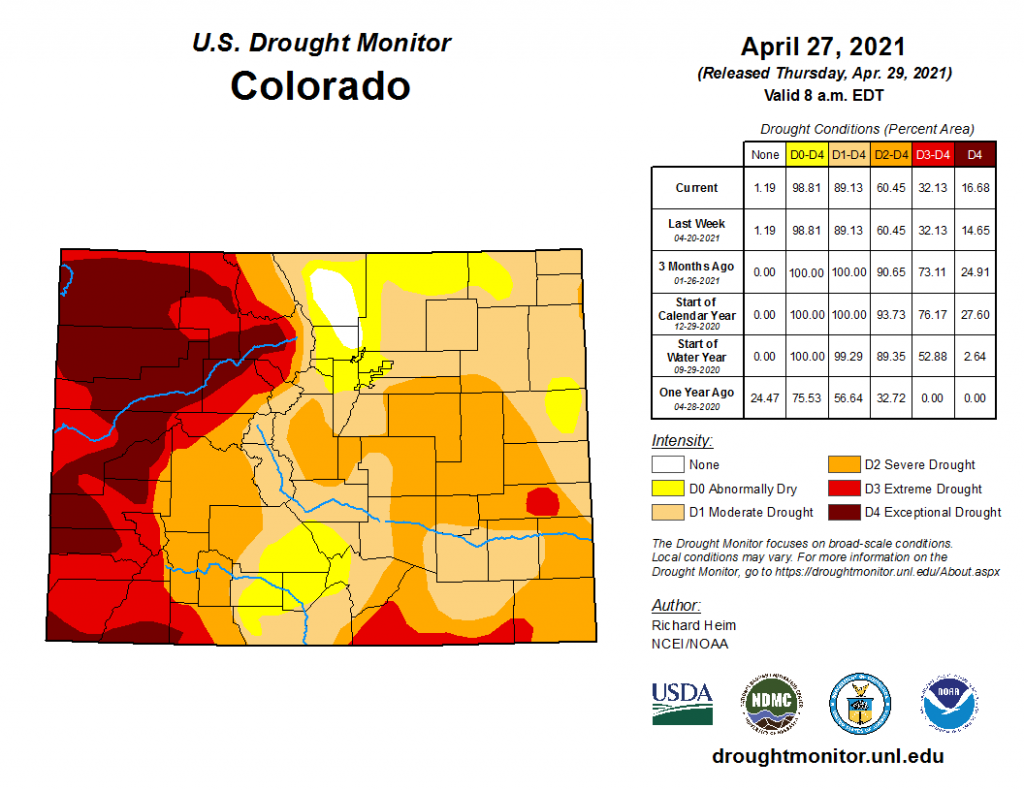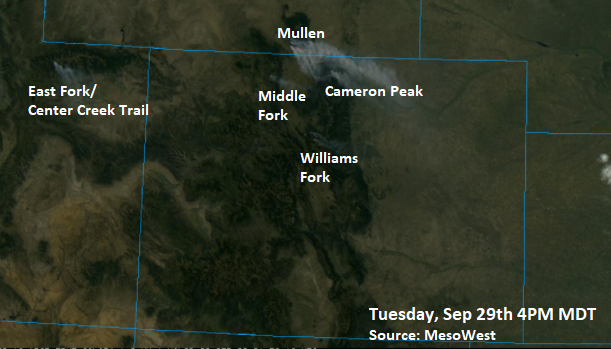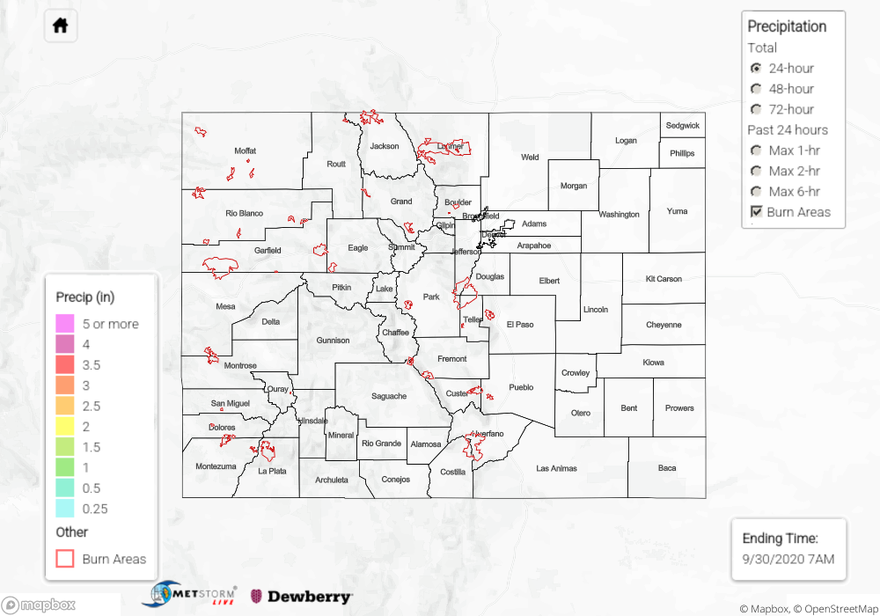Issue Date: Monday, May 3, 2021
Issue Time: 10:45 am MDT
Summary
Yesterday had a little bit of everything across the state of Colorado! Heavy snow was forecasted for the central mountains, and many SNOTEL stations (high elevation, mountain stations) picked up over half an inch of new liquid precipitation. Thunderstorms produced localized heavy rain, high winds, and pea-sized (0.25”) to over quarter-sized (1.00”) hail, all the way from Grand Junction to Lamar. The Boulder WFO issued flood warnings and advisories yesterday for portions of Larimer and Boulder counties around the Cameron Peak, Calwood, and East Troublesome burn areas, however there were no local reports of flooding. A tornado was even reported by a trained spotter west of Wiley, CO, which can be seen along with some of the large hail reports in the map below from the Storm Prediction Center.
Flooding was not reported on Sunday. For rainfall estimates in your area, check out our State Precipitation Map below.
Click Here For Map Overview
Note: The 24-hour, 48-hour and 72-hour total precipitation do not contain bias corrections today due to errors in the CoCoRaHS data. This means there may be underestimations in QPE over the southwest and southeast corners of the state.







